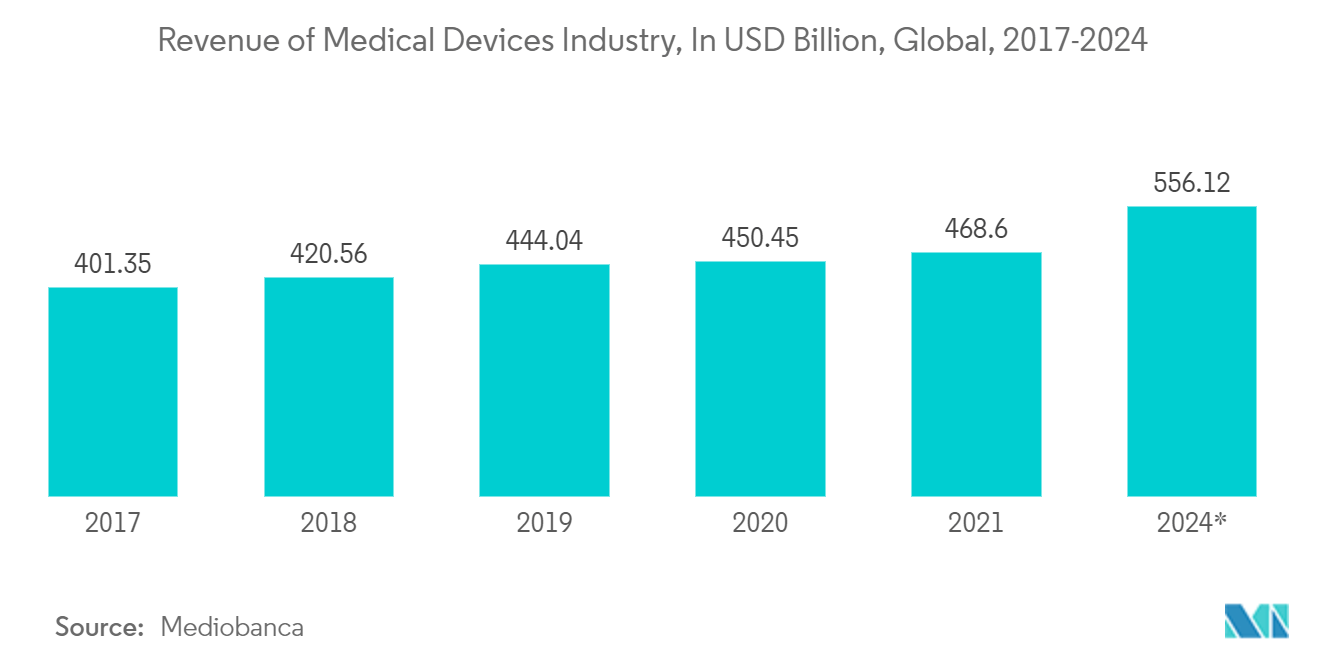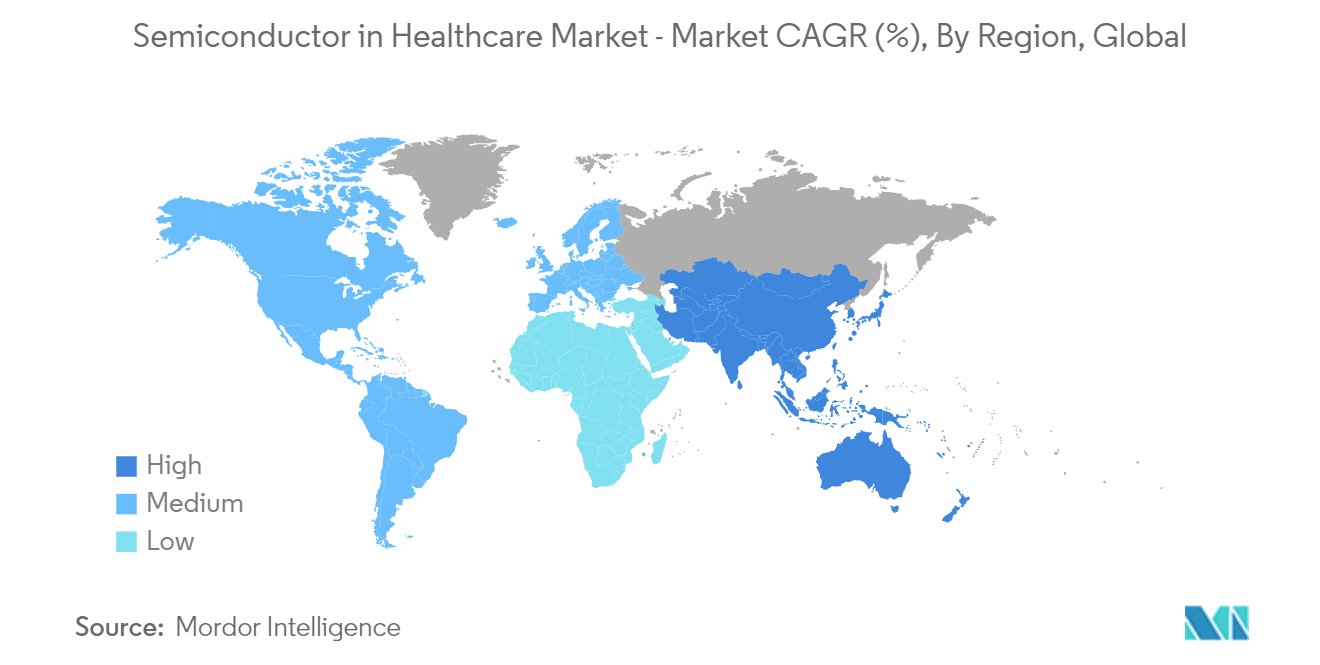Market Trends of Semiconductor In Healthcare Industry
Medical Imaging to be the Fastest-growing Application
- The medical imaging segment consists of computed tomography, magnetic resonance imaging, X-ray, and positron emission tomography that find applications in diagnosing various diseases, such as cancer and chronic diseases, via medical imaging.
- With the advancements in technology and the increasing adoption of technology in the healthcare sector, many advances were seen in medical radiation regarding equipment and techniques.
- Over the past few years, one of the significant advancements in interventional X-ray has been an increased focus on core and supporting technologies to provide high-quality, high-resolution images without a corresponding increase in radiation dose. This has been a critical driver behind technological advancements, such as Siemens' Artis Q, Philips' ClarityIQ and Q.zen technology, GE Healthcare's image-guided systems (IGS), and Toshiba's Infinix Elite product line. These have been driving the demand for advanced semiconductors.
- Owing to the increasing focus on radiological diagnostic tests and the rising burden of chronic diseases, the medical devices industry is witnessing growth in yearly imaging and diagnostic tests performed.
- According to the United Nations World Population Prospects, the number of people aged 65 years and over is steadily increasing. The number of older people (60 years and older) around the world is estimated to increase to 2 billion by 2050, of which 80% will live in low-income and middle-income countries. Therefore, the growing elderly population and increasing number of orthopedic and cardiovascular procedures are likely to further promote the adoption of medical imaging in healthcare applications.
- In the medical sector, dental applications require smaller and shorter scans. According to the Listerine Professional, oral conditions are the most faced health issues affecting 3.9 billion people globally. Therefore, in the dental sector, the primary demand for X-ray imaging is expected to increase and drive the demand for various semiconductors in the market studied.
- Furthermore, several companies are launching products associated with X-ray image analysis software to positively impact the segment's growth. For example, in January 2024, Carestream Health launched the DXR-Excel Plus, which is a two-in-one system for both fluoroscopy and general radiology that facilitates real-time images for a wide range of exams while providing features that help create an enhanced experience for users, patients, and administrators.

Asia-Pacific is Expected to be the Fastest-growing Market
- Asia-Pacific is expected to expand healthy during the forecast period. Key growth factors include increased investment in research and innovation centers, government programs, and policies to promote the IT and healthcare equipment and devices market. Additionally, the region is also the world's largest semiconductor market. This is due to countries like China, Japan, India, Taiwan, South Korea, and Singapore. These countries contribute to the growth of the healthcare segment.
- In Japan, companies invest in healthcare to build advanced businesses and achieve sustainable growth. For instance, FUJIFILM Holdings Corporation launched a new medium-term management plan, VISION2023, covering three years from the fiscal year ending March 2022 (FY2021) to FY2023. Over three years, VISION2023 foresees investments totaling USD 8.491 trillion to accelerate business growth, focusing on healthcare and highly functional materials businesses. The healthcare business will be expanded to the most considerable revenue and operating income segment to build a robust business foundation that enables sustainable growth.
- Moreover, China's State Council's 2014 National Integrated Circuit Industry Development Guidelines set the goal of becoming a world leader in all areas of the semiconductor industry by 2030. Furthermore, the Made in China 2025 initiative emphasizes semiconductor manufacturing as crucial to China's future economy and society. In addition, the country spent USD 574 billion on the healthcare sector.
- Additionally, South Korea is one of the major consumers, investors, and innovators in the market studied. South Korea's strong presence in the semiconductor industry and medical device manufacturing is helping the country strengthen its presence in the global semiconductor healthcare market. The government also plays a significant role in developing the domestic market, mainly to drive its economy.
- Moreover, the country utilizes AI in its pharmaceutical industry, further expanding the market. According to the government, South Korea's AI-driven drug development market is expected to grow by 40% annually and reach USD 3.9 billion in 2024.


